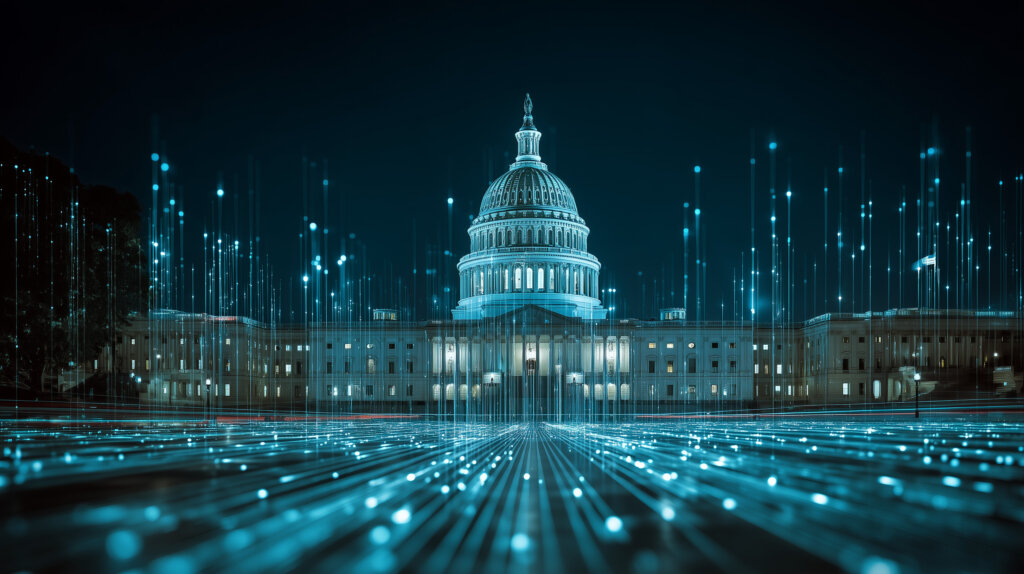On September 30, California Governor Gavin Newsom signed a sweeping new set of AI regulations into law, and the tech world is paying attention.
The Transparency in Frontier Artificial Intelligence Act (SB 53) now stands as one of the most comprehensive and high-stakes AI safety laws in the United States. It applies to advanced AI companies generating $500 million or more in annual revenue, including giants like OpenAI, Meta, and Google, and it signals a major shift: self-regulation in AI is over.
This law rewrites the script on how innovation, accountability, and public trust will coexist in the next decade.
What’s Actually in the Law?
SB 53 zeroes in on transparency, risk reporting, and internal accountability. Specifically, it requires:
- Public disclosure of safety protocols used in building frontier AI models.
- Detailed reporting of risks and incidents to California’s Office of Emergency Services.
- Legal protections for whistleblowers within AI companies who speak up about unsafe practices.
It also paves the way for a state-led AI consortium, dedicated to safe, equitable, and sustainable development. Importantly, this legislation was passed in a more tempered form than an earlier version, which Newsom vetoed last year under industry pressure. That proposal had called for “kill switches” and mandatory testing before deployment, ideas now tabled but not forgotten.
In parallel, Newsom signed a second bill targeting AI chatbot safety for minors. It requires bots to explicitly tell users they’re not human every three hours and to offer mental health prompts, particularly in conversations about self-harm or suicide.
Together, these two pieces of legislation make one thing clear: California is no longer asking tech to play safe. It’s demanding it.
The Industry Response: Fear of Fragmentation
Predictably, not everyone is applauding. Meta, Google, OpenAI, and VC powerhouse Andreessen Horowitz have publicly opposed the law, not because they disagree with safety, but because they fear a state-by-state regulatory patchwork.
This year alone, 38 U.S. states introduced over 100 AI-related bills, each with its own rules, definitions, and thresholds. That kind of regulatory fragmentation introduces complexity, cost, and uncertainty, all enemies of innovation at scale.
Some of the largest players are now funding super PACs, with Meta and Andreessen Horowitz pledging $200 million, to influence political outcomes and elect candidates more sympathetic to industry priorities. That’s not just lobbying. That’s a fight for narrative control.
But Here’s the Strategic Truth
For brands, founders, and enterprise leaders alike, this moment is about more than compliance. It’s about influence.
The companies that win in this next chapter won’t just be the ones with the best models or the fastest compute. They’ll be the ones who earn and maintain public trust.
We’ve seen this pattern before: privacy, social media safety, crypto. Emerging technologies follow a similar arc of explosive growth, public concern, regulatory response, and reputational risk. The smart companies get ahead of the regulation and build transparency into their DNA.
The New Playbook: Regulation As Brand Strategy
Whether you’re building with AI, investing in it, or just beginning to integrate it into your stack, this law changes the operating environment and the messaging strategy.
Here’s what that means:
- Transparency is now a competitive advantage. Proactively share how your AI products are tested, secured, and monitored. Early transparency becomes an asset, not a burden.
- Whistleblower protection is a brand signal. Protecting internal truth-tellers shows your stakeholders, from investors to users, that safety isn’t a box-checking exercise.
- Public positioning matters. Whether you support the regulation or not, staying silent is no longer neutral. What you say, or don’t, signals your values to a rapidly forming consensus around AI ethics.
- Localized policy strategy is essential. In the absence of federal guardrails, states will lead. Expect more SB 53 copycats from New York, Illinois, and Texas. Your brand needs a communications strategy that’s state-aware and politically fluent.
Why It Matters for the Long Game
California’s legislation is a message. What happens there influences global product decisions, capital flows, and media narratives.
The real takeaway isn’t about legislation. It’s about leadership.
Do you wait for regulators to knock, or do you meet them at the door with answers?
We work with some of the most influential emerging tech and AI companies in the world. We understand that how you communicate safety is just as important as how you build it.
We help our clients:
- Sway public and policymaker perception
- Shape narrative during regulatory scrutiny
- Build long-term brand trust in high-stakes environments
- Turn compliance into credibility
In a world of rising risk and declining public trust, clarity is currency.
As AI matures, every company is now in the influence business, whether you like it or not. The question is: Are you shaping the narrative or reacting to it? Let’s talk.
We are the Agency for Influence
Discover new ways to drive revenue and build reputation for your brand.






